Coonhounds, or in other words raccoon hounds, are several varieties of hunting breed that have specific abilities. Are hunters most often engaged in breeding such pets? And it is in this environment that they are appreciated. Less often they are turned on as companions or to participate in show programs. Hounds are dogs with special needs, before taking such a puppy into a family, it is worth seriously weighing the pros and cons.
History

The first coonhounds appeared in America during the colonization period. According to history, George Washington brought Foxhounds from Europe, which became the ancestors of the modern breed. They interbred with French hounds donated by the Marquis de Lafayette. It was these individuals who stood at the base of the new breed – the raccoon hound dog.
According to another version, dogs with a characteristic appearance lived in America at the beginning of the eighteenth century. Their ancestors were bloodhounds used in raccoon hunting. In the process of breeding a new breed, the working qualities of the animal expanded. Coonhound could hunt different types of game in different natural conditions.
Personality
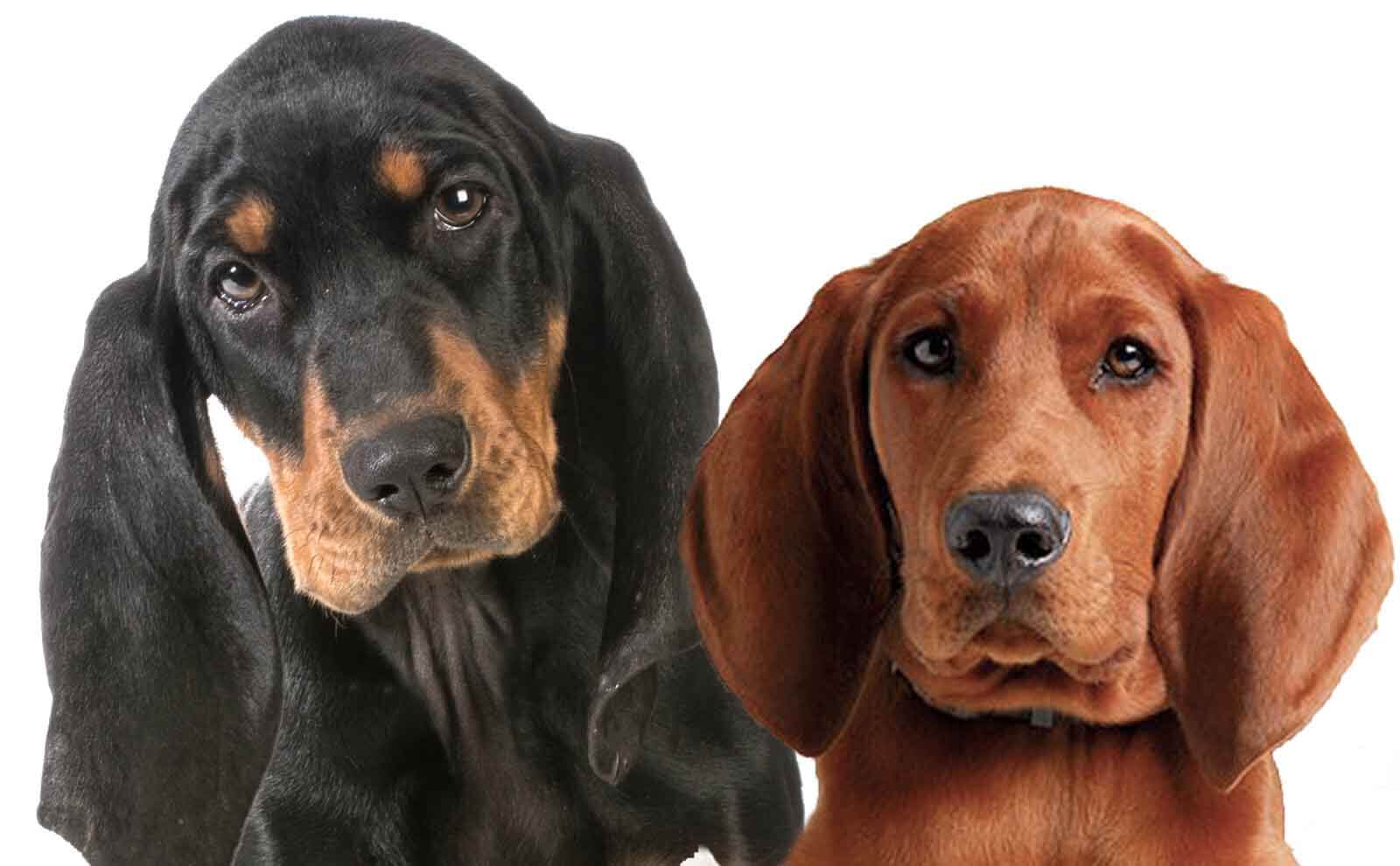
It is difficult to find a more hardworking, strong, and resilient dog than a coonhound. The fearlessness and courage of the representatives of this breed made them dangerous, dexterous hunters, even for large animals – bears, pumas, deer.
In the family, these are affectionate, loyal pets who are always happy to communicate with the owner and other household members, they are ready to spend time together.
A well-mannered and trained Coonhound unbound is always ready to follow the commands of his master. Training is very important as these dogs are independent and independent. They are, under normal conditions, quite balanced and amenable to training.
Raccoon hounds get along well with children, they can spend hours playing games, running around, jumping, and running tirelessly. But it is worth considering the size of this animal, the dog can accidentally harm the baby.
Coonhounds make excellent watchmen, they do not welcome strangers too much and are extremely distrustful of them. Representatives of this breed are highly active, and they are ready to work at any time – you just need to call.
But communication with other animals, besides their own kind, is unlikely to work. All hounds, including raccoons, are hunters to the core, and they have highly developed instincts. The dog will consider any animal exclusively as prey.
Description of the Coonhound Breed

Today there are 5 types of coonhounds:
- American black and tan;
- Red (ribbon);
- English speckled red;
- Speckled blue;
- Coonhound Walker.
Only the black and tan Coonhound received official recognition, while the rest of the types remained only varieties of this breed.
All coonhounds are sturdy, well-built, muscular animals. They are able to work in almost any condition. The maximum height of males is 70 cm, bitches – up to 63 cm, an error of 1.5-2 cm is allowed, but no more. The weight of dogs varies between 32-50 kg.
Raccoon hounds move easily and naturally, without heaviness and with a special grace. They push their front paws forward a lot and push back springy with their hind legs. The standard contains the following descriptions of the breed representatives:
- The head has a noble set, elongated, dry, with a narrow, rounded forehead. The occipital region is well defined, the cheekbones are flattened, the arches above the eyebrows are moderately prominent.
- The muzzle is rectangular in shape, with drooping lips and folds at the corners of the mouth, they are black or dark brown. The transition from the forehead to the bridge of the nose is noticeable, but not clearly expressed. The bridge of the nose is even, with a slight bulge.
- The jaws are strong, with powerful, white teeth creating a scissor bite. The nose is black or brown, well defined, the nostrils are wide open.
- The eyes are small, rounded, with a shallow set and dryish, tight-fitting eyelids. The look is benevolent, but certain alertness slips.
- The auricles are elongated, thin, hanging down, located closer to the back of the head. Located on soft cartilage, they form graceful folds, giving the head a festive, elegant look.
- The neck of dogs is of medium length, has a nice curve, and is covered with dry muscles. The withers are not prominent.
- The body is almost square, strong, well-muscled, with a straight, straight back. Ribs are oval, curved. The ribcage is voluminous, moderately long, which ensures the animal’s endurance during movement.
- The croup has a slight bevel, the line of the lower abdomen in the groin area is tucked up.
- Extremities. The front ones are parallel to each other, dryish, even, with oblique shoulder blades and muscular shoulders. Hindquarters – Slightly set back, standing straight, strong, with muscular thighs, elongated legs, harmonious hocks, and steep metatarsus. Paws, like those of cats, are collected in a ball with well-pressed toes and voluminous, compacted pads.
- The tail is of good length, thick at the base, but tapers towards the tip. Set below the spinal column. During movement, he rises up, when the dog is calm, the tail hangs down.
Coat and Color
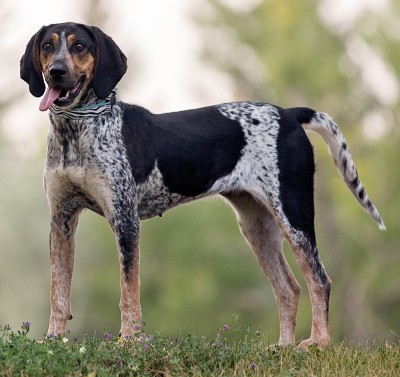
All varieties of coonhounds are similar to each other, they have short hair, smooth and shiny, the main difference is its color:
- Black and tan raccoon hound – there is only one color – the coat is black, above the eyes – tan, on the muzzle from the sides, on the sternum and limbs there maybe stripes.

- Red Coonhound – the main color of the coat is red, but white spots are allowed.

- English, speckled-red raccoon hound – spots of a reddish-reddish tone and densely applied specks are located on a white background, but individuals with a bluish speck, tricolor, reddish, black, lemon-white, or variegated are found.

- The speckled blue coonhound is a unique tricolor in which the main color is white, there are multiple blotches and black spots on it, giving the color a bluish tint. There are red markings on the muzzle, eyebrows, and limbs.

- Coonhound Walker – there are individuals with the tricolor and two-tone color, strict requirements for shades are not imposed, but the background should be light, and the spots should be dark tones.

Where are Dogs of This Breed Used?
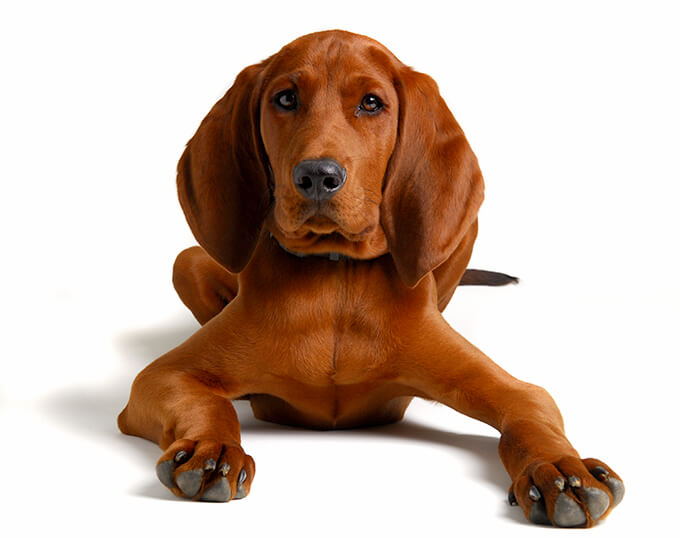
The direct purpose of raccoon hounds is to hunt raccoons, wild boars, possums. They also go with them to a deer, a bear. In their work, dogs use a lower instinct, that is, they need a hot trail for tracking.
Dogs with a similar sense of smell were highly appreciated in search and rescue activities and operational-search work. They are able to assimilate the necessary program, but their peculiarities are taken into account when learning.
Coonhounds are great for service. But they also make excellent companions, however, only if the owner has a strong character, self-confidence, and has free time to deal with a four-legged friend.
Education and Training
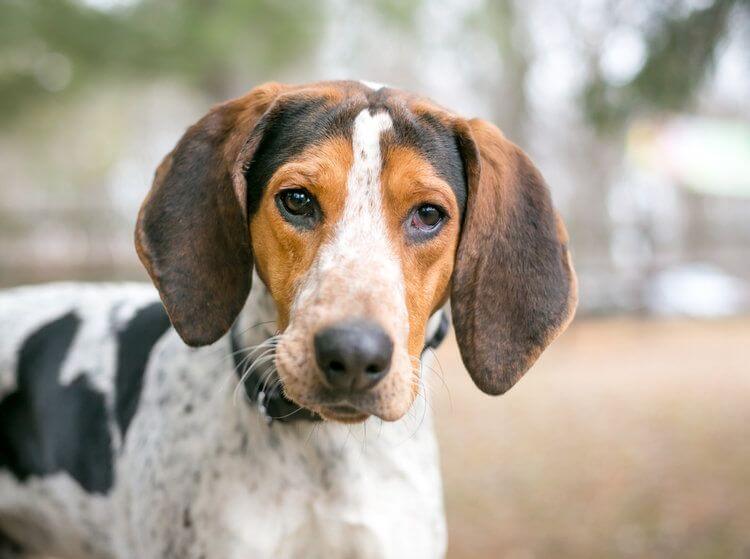
Coonhound is a dog with a highly developed hunting instinct. At work, she always shows herself great. Most often, a pet is taken for a possum, wild boar, or raccoon, less often for a deer or bear. The dog has a good lower instinct, perfectly navigates the hot trail. This quality allows you to use the coonhound for official purposes. Such dogs have proven themselves in search work in the police and rescue services. Their intellectual data is suitable for memorizing a variety of commands and behavior patterns in different situations. If the owner shows patience and firmness of character, voices command in a confident voice, then the raccoon hound does everything unquestioningly. She is a great companion for strong people.
All those qualities of a dog that are appreciated in hunting or service can strain the owner in everyday life. A Coonhound walking on a leash can instantly turn into a game hunter, pulling the owner along. Such situations sometimes injure both the dog itself and the owner. Walking your dog off a leash is generally not recommended. The raccoon hound is the kind of dog that gets lost easily by pursuing an imaginary game.
It will hardly be possible to wean the dog to hunt. The natural instincts of the animal are so strong that neither training nor even special training, can finally teach a dog not to react to the tracks and movements of small animals. Although dog training is necessary, in any case.
As soon as the puppy appears in the house, it should begin to be raised. The first thing to pay attention to is the ability to hear and approach the owner at the first call. For this purpose, both a voice and a special sound horn can be used. Pour food into the bowl only when the puppy has heard and approached. This will develop in him the habit of always following the call of the owner.
The grown dog is taught to find the owner in the area after the rut. To do this, the pet must clearly distinguish the smell and trace of the owner among many people, especially in urban environments. The training is carried out on a special platform with a fence. As soon as the puppy understands what they want from him, you can transfer training to an open area.
Hunting and service dogs should be trained to find one track and follow it only. The dog should be able to choose the only one needed among the many tracks and not be distracted from it. In the case of switching the pet’s attention, you should use the prohibition commands. If the dog is on the right track, it must inform the owner of its location so that the hunter understands the route of movement. Silence during the rut is a vice for a hunting dog. This quality is inherited. Puppies with this defect are discarded early in training. They are not suitable for further breeding for official and hunting purposes.
An important rule for all coonhound owners is to devote as much time as possible to early training and education. The puppy grows very quickly, and in adulthood, it is almost impossible to make up for lost skills. The more the dog knows after training, the easier it will be to communicate and work with it in the future.
Care and Maintenance
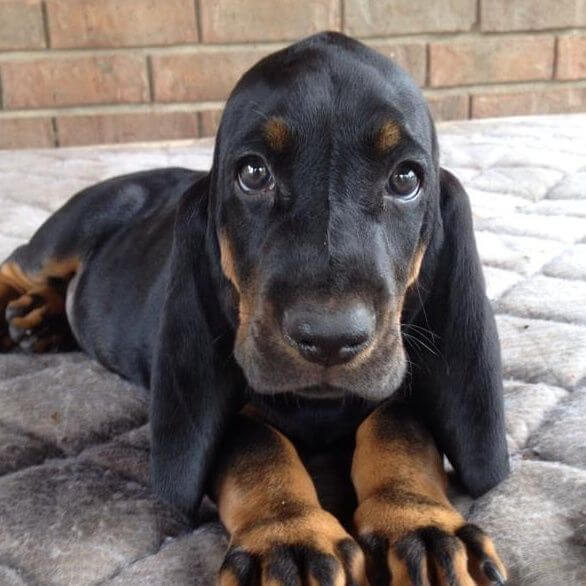
The Coonhound has a short coat that does not require complex care. It is enough to comb the dog at least once a week. Despite the fact that the raccoon hound is smooth-haired, the dog sheds very profusely. This is a definite inconvenience in apartment maintenance. In addition, the coat has a pungent odor that is common to many hunting dogs. It cannot be removed by frequent bathing using cosmetics. Therefore, bathing the Coonhound should be done only when absolutely necessary.
Caring for a raccoon hound is no different from caring for other dogs and includes trimming the claws, monitoring the condition of the teeth, eyes, and ears.
Content in a spacious aviary is considered the most acceptable for a coonhound. The dog needs constant movement, which is difficult to provide with an apartment. If the dog moves a little, then sooner or later he will face diseases of the musculoskeletal system. Dogs with open-air cages, all the same, need long active walks. The coonhound must communicate with the owner regularly. The dog tolerates cold air well, so it can live in a booth. For the winter period, it must be well insulated.
Experienced breeders do not recommend that the coonhound lives in an apartment. This is an inconvenience, both for the dog itself and for the owner. Within four walls, the dog will not receive the necessary physical activity. In addition, alone, she will begin to get bored, howl, look for something to do. Often, a dog that is alone for a long time begins to spoil furniture, things, and more.
Feeding
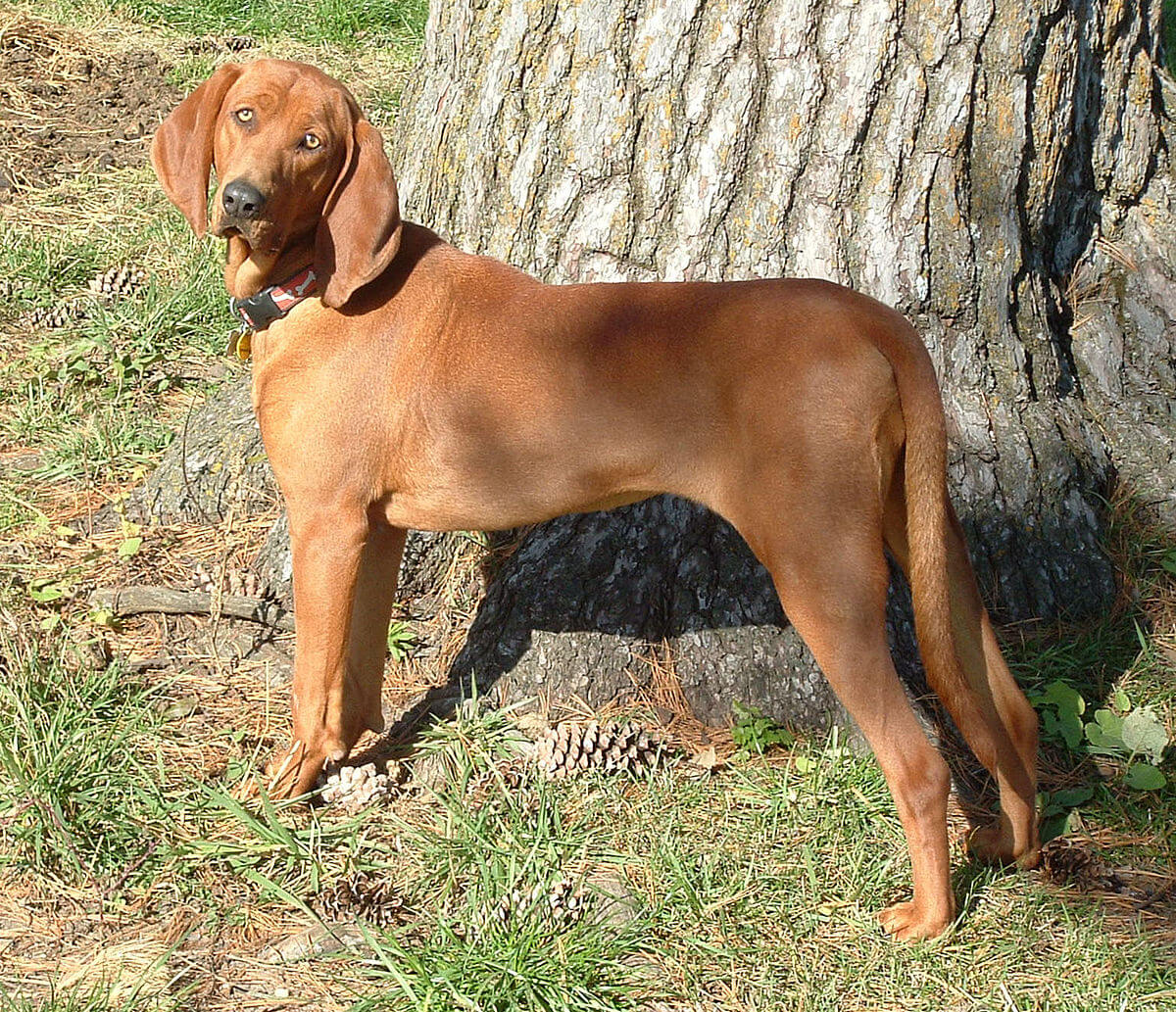
Whatever type of food is chosen for the dog, you need to monitor its composition. Food should contain all the necessary vitamins and minerals. Coonhound is a dog with increased activity. She needs constant access to drinking water.
If the owner prefers to feed the dog with natural food, then the main diet should consist of meat as a source of protein. It can be given clean or on large bones. Chewing bones strengthens your pet’s teeth well.
In addition to meat, the dog should eat cereals, dairy products, and cheese, boneless fish, fruits, and vegetables. It is strongly discouraged to offer the Coonhound raw egg whites, pastries, flour products, and legumes.
If the industrial feed is chosen as the basis of nutrition, then it must strictly correspond to the age, breed, and weight of the animal. Preference should be given to premium food, which contains all the necessary set of trace elements.
Health
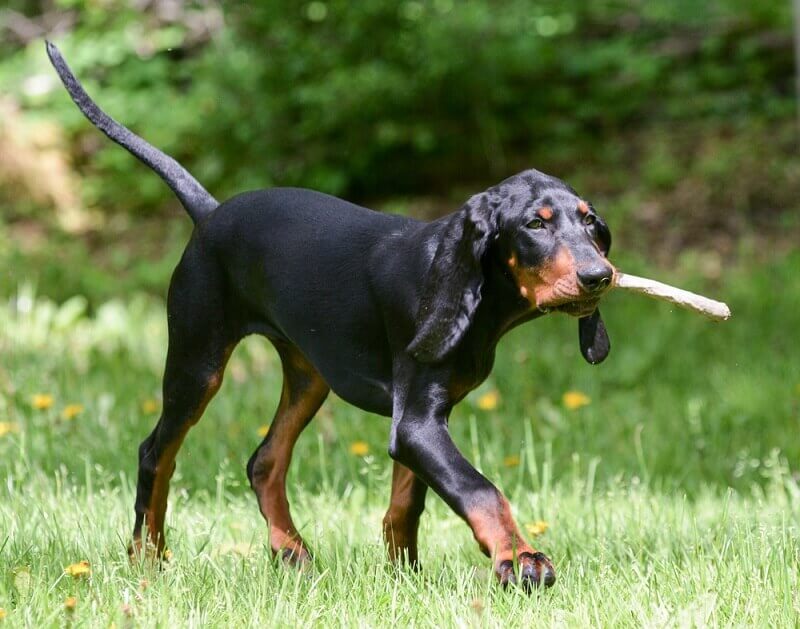
Coonhound has good immunity by nature. But even such dogs have some diseases:
- dysplasia of the hip and elbow joints;
- obesity;
- diseases of the eyes, injury to them during the hunt;
- dirofilariasis of the heart;
- infectious diseases;
- various parasites: worms, fleas, ticks, etc.
The main diseases of the Coonhound are associated with hunting. It is during the rut that the dog most often receives injuries to the limbs and eyes. Direct contact with wild animals is associated with the risk of parasitic and infectious infections. You can only protect your pet by timely vaccination, treatment against parasites, as well as preventive medical examinations. If the dog has a balanced diet and qualified medical care, then the risk of development decreases significantly.
How to Choose a Puppy
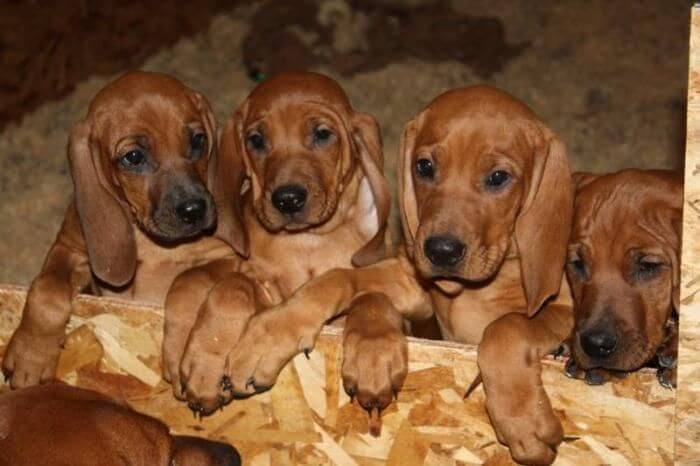
The choice of a puppy should be approached from the professional side, since the raccoon hound is a working dog, and certain abilities are required from it.
If you need a dog for shows, the outer exterior of the puppy is more assessed, the maximum compliance with the standard. A puppy for hunting should be taken from working parents who have succeeded in this field. In their offspring, hunting instincts will be more pronounced.
Coonhound is a dog that belongs to the group of hounds and has a lot of natural abilities. This is an excellent hunter, fast, hardy, active. And for the family – an assistant, loyal and devoted. But you should buy a puppy of this breed only if its qualities are worthy of use, and the owner can provide suitable conditions for its maintenance.




